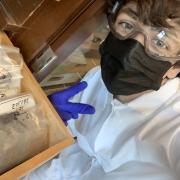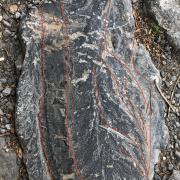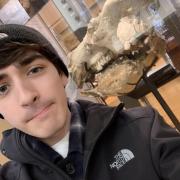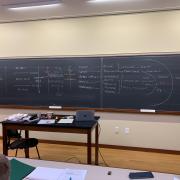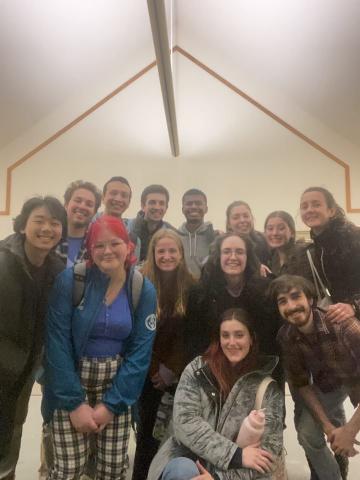Matt Vitelli '23 - Introduction

My name is Matt Vitelli (He/Him/His) and I am a rising junior here at Amherst College. I am from West Hartford, Connecticut, only an hour drive south of campus, so home is never too far away whenever I’m at college. I am a prospective double major in History and Geology, having announced History as my first major this past spring and hoping to add Geology this upcoming fall. Beyond these two main areas of study, the open curriculum at Amherst has allowed me to take classes across a wide range of departments and topics, including (but not limited to) Russian Literature, Chinese Language, Political Science, LJST, Environmental Studies, International Relations, Greek Drama, and even Paleontology! Outside the classroom, I, like most other Amherst students, am actively involved in many other aspects of campus life. A sampling of my activities are listed below:
On-campus jobs:
- Summer Science Undergraduate Research Fellowship: My first summer here, I worked in the geology lab of Professor Anna Martini working on hydrologic analysis of well water in the Powder River Basin area of Wyoming. This was done through the SURF program, an opportunity offered by the school for rising sophomores and juniors to work directly with a STEM professor over the summer, helping them with their research.
- Lab Assistant in the Geology Department: My second summer here, I worked in the geology lab of Professor Dave Jones, studying sulfur isotope records in carbonate rocks from Anticosti Island, Canada. Being a lab assistant offers the opportunity to potentially be published with a professor, as one of the student workers that helped them during their research.
- Tour Guide: Now on my third summer at Amherst College, my job this year is working in the Office of Admissions. This job involves giving tours to summer visitors, manning the front desk of the office, working on projects related to admissions and prospective student programming, as well as putting out blog posts like these ones!
On-campus activities:
- Mr. Gad’s House of Improv: Throughout the year, I am a member of Amherst’s one-and-only, select Improv troupe! A group of around twelve students, we perform for the campus every Monday night of the year in Keefe Campus Center. Along with weekly improv shows, we also put on special events such as our annual “Murder Mystery.” The shows are a great way to relax and destress for an hour at the beginning of a busy week, and are just as fun to perform in as to watch.
- Ghostlight: I am president of Ghostlight at Amherst, a newly created theater RSO (Registered Student Organization) that specializes in putting on student-written as well as small, intensive, black-box style plays. Our first official show is already being put together this summer, a triple feature that is composed of three different Amherst students’ plays, directed by them and acted and crewed by other Amherst students! It’s super fun to be part of student-led theater here on Amherst College campus, but if you’d prefer to work with a professor, the department shows are always an option as well.
- The Amherst Student: My friends and I occasionally submit writing to our weekly student-run newspaper, “The Amherst Student,” as contributing writers. If you want to be involved more consistently, The Student also offers tons of opportunities to join their team as a staff writer contributing biweekly, an opinion columnist writing each week, or even being a section editor.
- WAMH: WAMH is Amherst’s student run radio station, hosted in Keefe Campus Center, and offering students the opportunity to host their own radio show, either playing music, hosting a podcast-style talk segment, or doing really anything you want that complies with radio guidelines. While not running my own show (yet), I love hanging out with my friends for an hour or two during their WAMH shows, helping with running the music or contributing as a guest host. I’m aiming to start my own show with my roommate at the start of next semester!
I love talking about Amherst College to anyone who would like to hear, so if you have questions about anything I mentioned above, or something totally unrelated, feel free to shoot me an email at mvitelli23@amherst.edu anytime! I’d love to respond to any questions you have, and I’ll try to get back to you as soon as possible. I hope you enjoy my blog posts over the course of this summer, or whenever you are reading this page!


